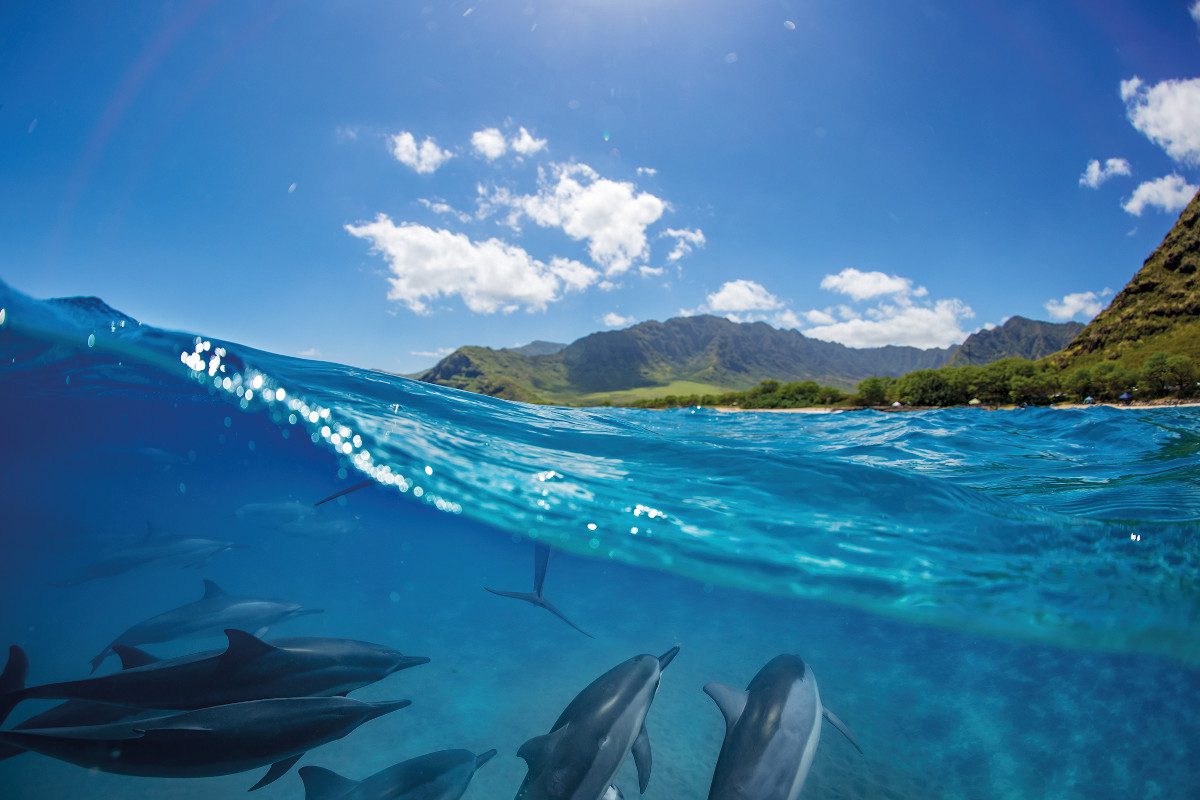
As early as next year, the ocean’s vast international waters could – for the first time – have rules for comprehensive biodiversity protection, once the UN High Seas Treaty secures the 60 national ratifications needed for it to enter into force. As nations convene later this month to determine the institutions and processes needed to implement the Treaty, scientists stress in a new paper published on 13 June in Nature the importance of accounting for the specific challenges posed by the climate crisis.
The “high seas” – all international waters and seafloor outside any one country’s jurisdiction – comprises two-thirds of the world’s ocean and is one of the largest reservoirs of biodiversity on Earth, providing migratory routes for species such as whales, sharks and tuna and hosting unique deep-sea ecosystems. However, only 1% of these waters are fully protected. The need for protections throughout the high seas is believed to essential to meeting global sustainability goals such as the Convention on Biological Diversity’s Global Biodiversity Framework and its targets, including protecting at least 30% of the ocean by 2030 (30×30).
The new paper – “To save the high seas, plan for climate change” – outlines why and how the High Seas Treaty on biodiversity beyond national jurisdiction (BBNJ) has the unique opportunity to factor climate-driven marine changes into its implementation framework. As governments prepare for the Treaty’s entry into force, the scientists argue that critical questions must be taken into account on how best to define and implement high seas Marine Protected Areas (MPAs), particularly for migratory species whose habitats and migration patterns are shifting due to warming waters, changing ocean currents and altered food webs.
“Protecting high seas biodiversity in the face of climate change is an ongoing chess game,” said Dr. Lee Hannah, Senior Scientist of Climate Change Biology at Conservation International’s Moore Center for Science and lead author of the paper. “Everything from whales to fish are moving to track warming waters. This ocean upheaval, due largely to climate change, can be addressed by the High Seas Treaty, which is why its swift ratification is so important.”
The paper introduces three crucial steps that the High Seas Treaty must take to effectively address climate change impacts on species:
- collaborate with fisheries management and other high seas organizations to conserve moving species;
- coordinate strategic plans for conservation networks across the high seas and national jurisdictions; and
- share and build scientific capacity across jurisdictions for modeling ocean ecosystem dynamics and movements of species in response to climate change.
Each of the three steps, the authors suggest, will help answer critical questions about how to demarcate MPAs for species that may soon shift outside of their current ranges, including those species that migrate vast distances across the ocean.
“We need to be thinking on two timelines at once – how the species in the high seas live now, and how they might live decades from now as climate change worsens. And of course, it’s made all the more complicated that no one country is in charge of the high seas, it’s a global group effort. But that’s why it’s so important to start planning now, so we have a solid roadmap by the time the Treaty has entered into force and is ready to be implemented,” said Hannah.
Currently, seven countries have ratified the High Seas Treaty and 90 have signed it, thereby signaling their intent to ratify. The High Seas Alliance is campaigning for at least 60 nations’ ratifications to be secured by the third UN Ocean Conference in June 2025.
“Our success in responding to the climate and biodiversity crises also depends on how we can adapt to a constantly changing environment,” said Rebecca Hubbard, Director of the High Seas Alliance. “As governments gather this month to decide the processes to implement the Treaty, we have an important opportunity to factor in effective responses to marine protection and get ahead of the curve on climate change impacts in over two-thirds of the world’s ocean.”
The paper was co-authored by scientists from several member organizations of the High Seas Alliance, including Conservation International, BirdLife International and Oceans North. Other authors representing Blue Nature Alliance, University of California Santa Barbara, Fisheries and Oceans Canada, Dalhousie University, Environment and Climate Change Canada, the German Federal Agency for Nature Conservation and the Swedish Agency for Marine and Water Management also contributed to the paper.
The paper was published on 13 June: https://www.nature.com/articles/d41586-024-01720-2
At the time of publication, the High Seas Treaty has been ratified by Belize, Chile, Mauritius, Micronesia, Monaco, Palau and Seychelles.
- SEO Powered Content & PR Distribution. Get Amplified Today.
- PlatoData.Network Vertical Generative Ai. Empower Yourself. Access Here.
- PlatoAiStream. Web3 Intelligence. Knowledge Amplified. Access Here.
- PlatoESG. Carbon, CleanTech, Energy, Environment, Solar, Waste Management. Access Here.
- PlatoHealth. Biotech and Clinical Trials Intelligence. Access Here.
- Source: https://envirotecmagazine.com/2024/06/13/high-seas-policy-presents-historic-opportunity-for-climate-change-adaptation-scientists-say/




